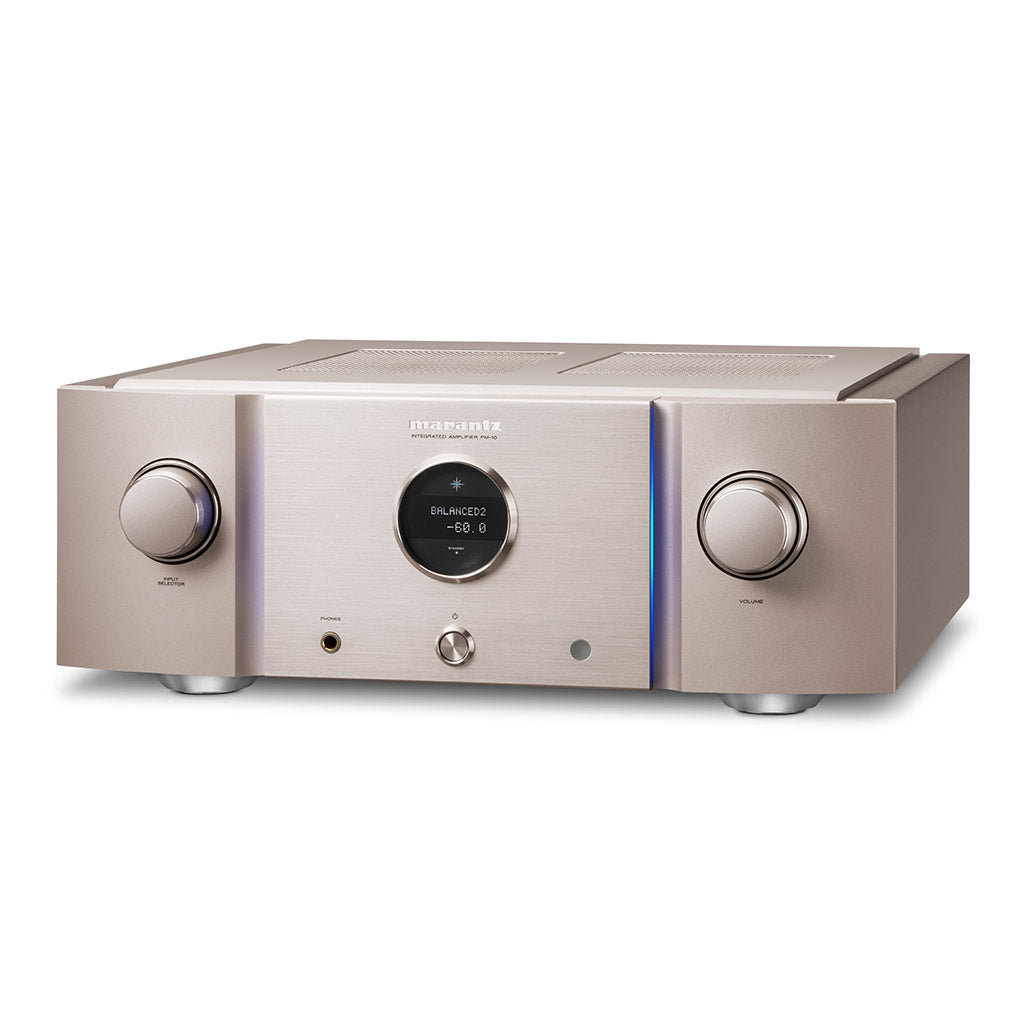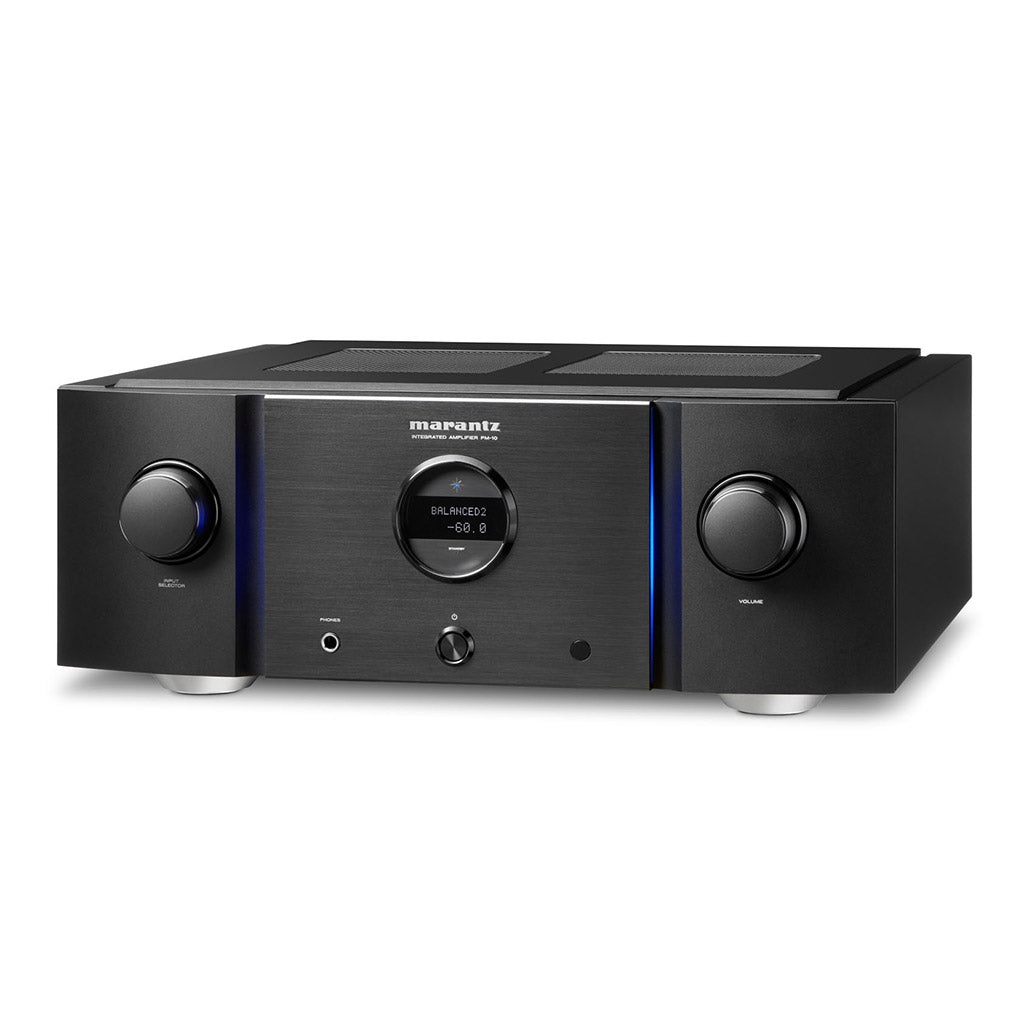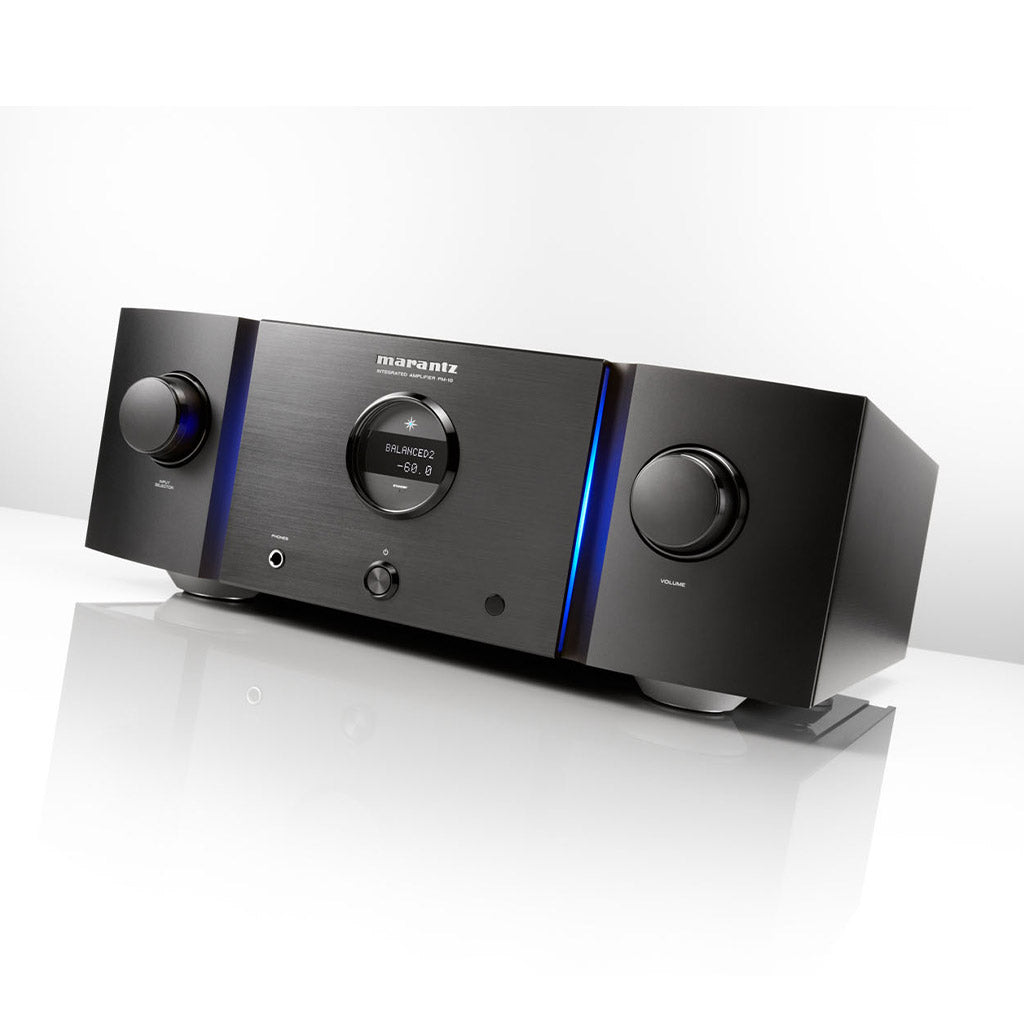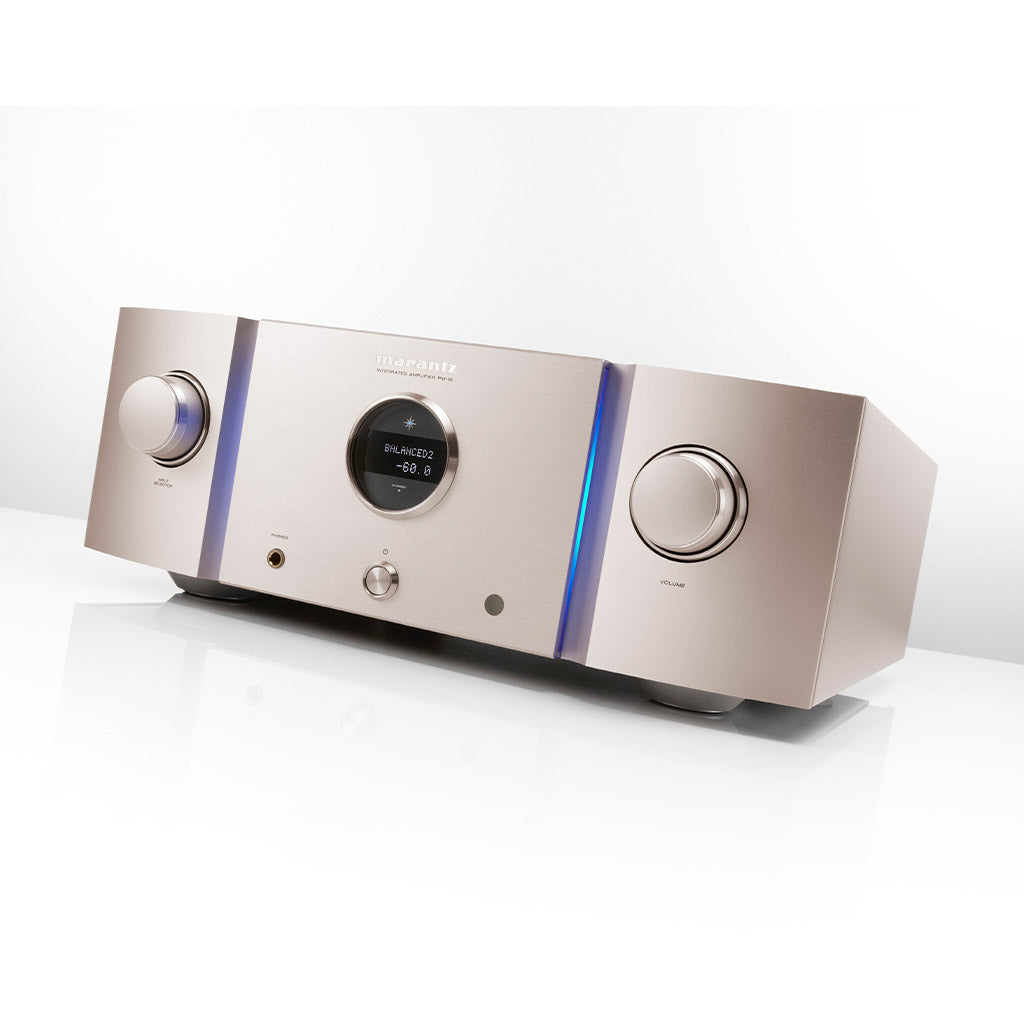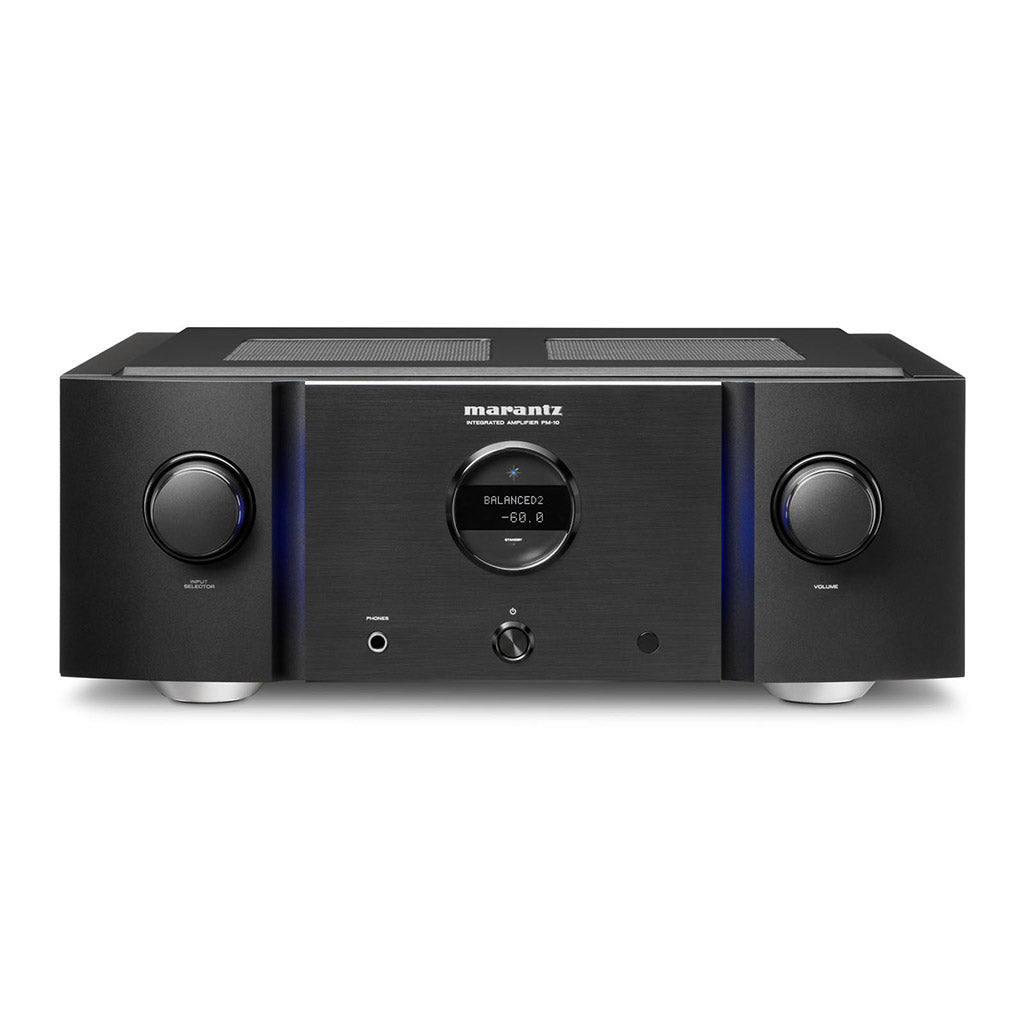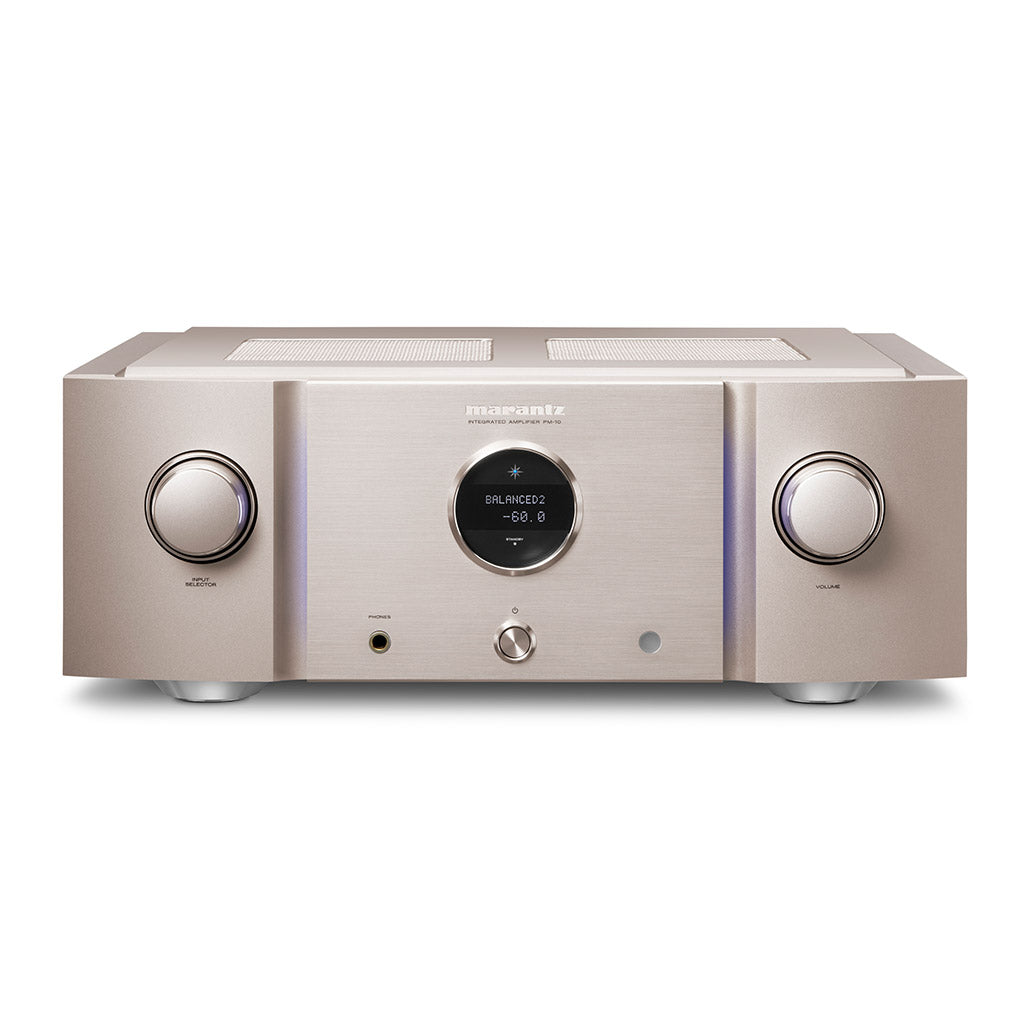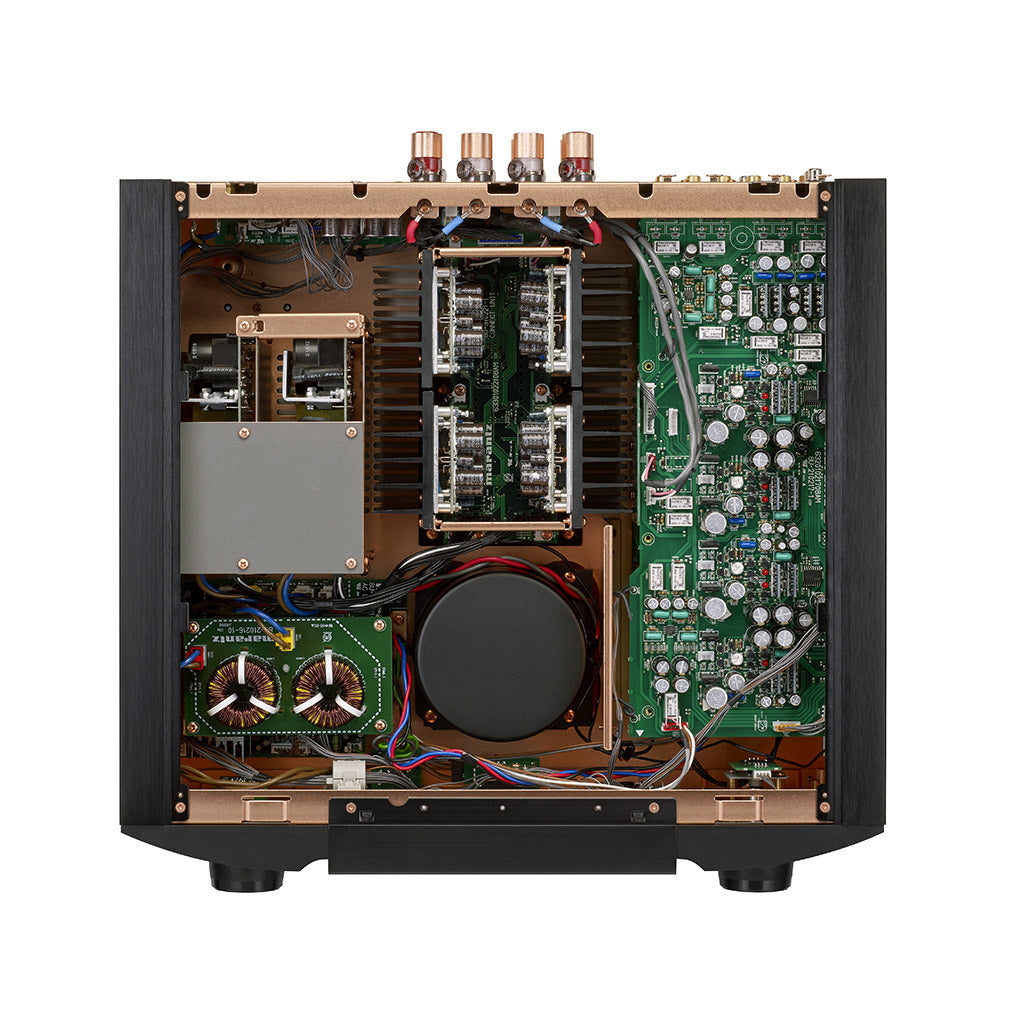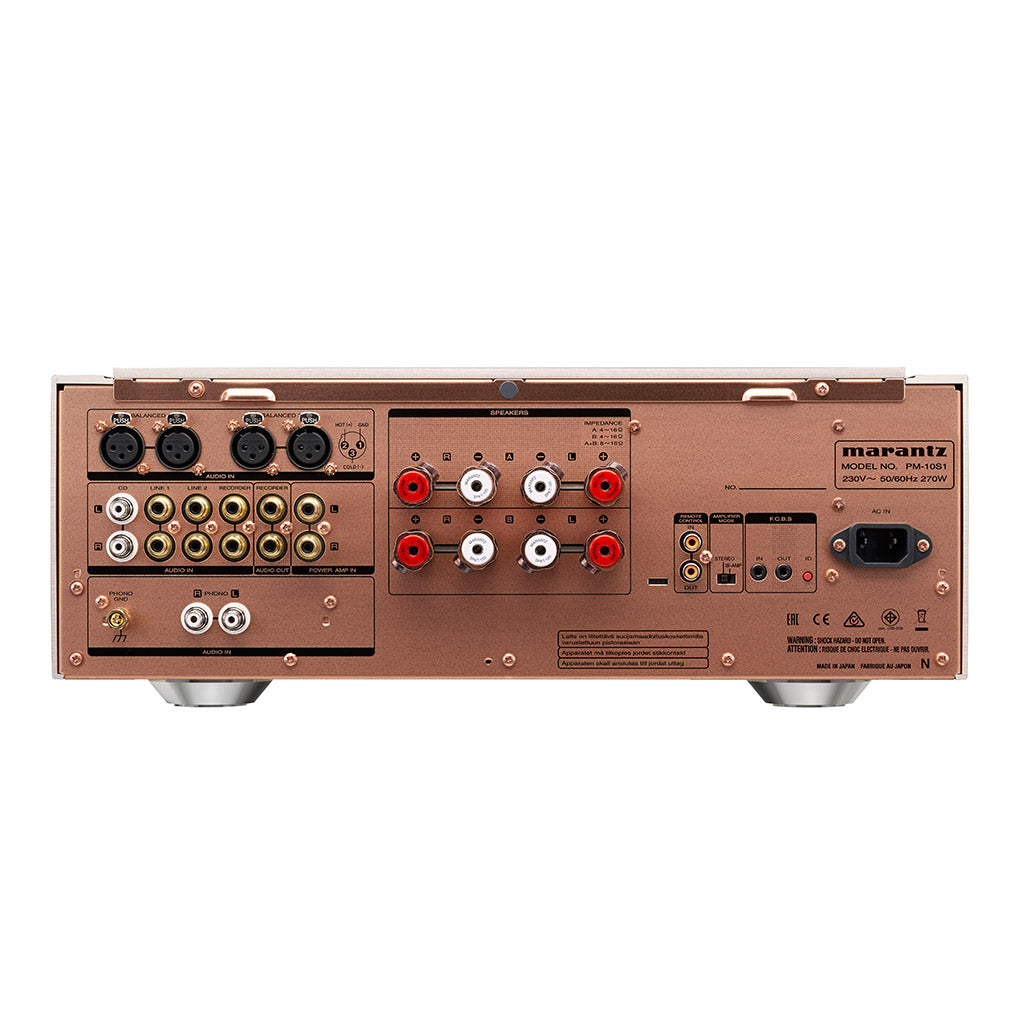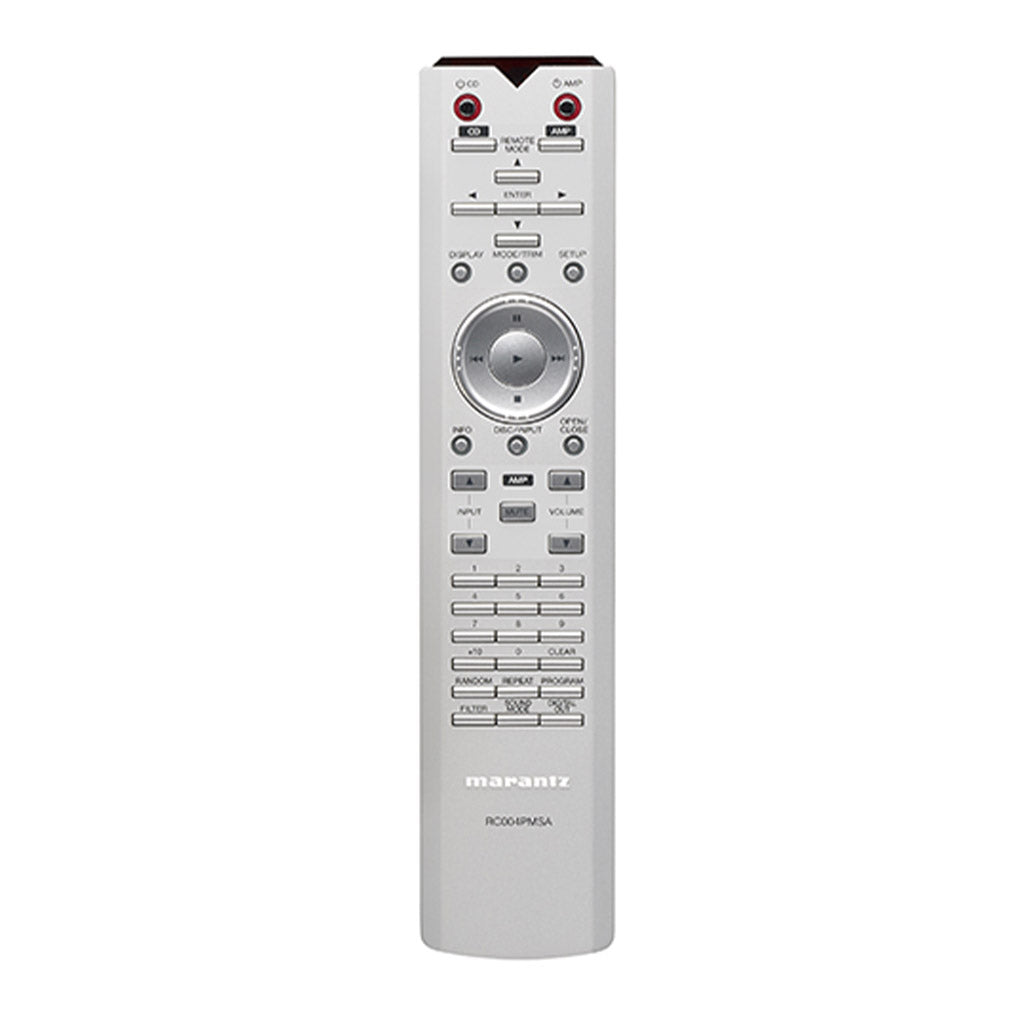Marantz PM-10 Reference Integrated Amplifier
Marantz PM-10 Reference Integrated Amplifier - Gold is backordered and will ship as soon as it is back in stock.
Couldn't load pickup availability
DEALS & SPECIAL OFFERS
DEALS & SPECIAL OFFERS
12 MONTHS BUY NOW PAY LATER
12 MONTHS BUY NOW PAY LATER
WARRANTY INFORMATION
WARRANTY INFORMATION
5 year Manufacturer Warranty provided by Marantz. Register your product within 30 days of purchase directly with the manufacturer
DELIVERY INFORMATION
DELIVERY INFORMATION
Subscribe to our newsletter
Sign up for exclusive offers.
Specification
Specification
Payment & Security
Payment methods
Your payment information is processed securely. We do not store credit card details nor have access to your credit card information.
Marantz PM-10 Reference Integrated Amplifier
This massively powerful integrated amplifier is constructed more like a high-end separate preamplifier and a pair of monobloc power amps, but all in one beautifully finished case, designed both to maximise performance and create a strong visual statement.
Optimized Design
To achieve such quality, while still delivering class-leading power, means optimising each section of the amplifier for its task, just as would be done in a design using a separate preamplifier and monobloc power amps.
Commonly, amplifiers use a single transformer, with separate power supply regulation for the preamplifier and power amplifier sections; the PM-10 takes things much further.
A dual-mono design, it has separate power supplies for the preamplifier and each of the power amplifier channels, with one transformer dedicated to the preamp to ensure the delicate signals passing through that section of the amplifier aren’t affected by the demands of the high power output stages. There’s also a dedicated supply for the microprocessor controlling volume adjustment, input selection and so on, ensuring no noise from the control section finds its way in to the audio path.
Pure analogue
Another important part of the noise-reduction here is the fact that the PM-10 is a purely analogue amplifier: many rival designs are today including digital-to-analogue conversion, or adopting digital amplification and volume control, but the Marantz keeps things as clean and simple as possible with its highly-developed all-analogue design.
What’s more, to make the most of that purity of design, the PM-10 has also been designed with the option of working in ‘Purest Mode’: when engaged, this deactivates any superfluous circuits, giving the signal the cleanest possible path through the amplifier. There’s also a Power Amp Direct input, taking the signal straight from the input section to the power stage to let the unit work as a pure power amplifier.
Fully balanced, from input to final power section
The benefits of balanced audio layout have long been understood: unlike a conventional layout, one half of the signal path is in the ground plane of either an amplifier or a cable, balanced working uses two conductors or paths – one for positive, the other for negative – and an entirely separate ground to protect them.
The benefit in cables is that any external interference will affect both positive and negative conductors, but since the signals they are carrying are the mirror image of each other, they will mutually cancel out any effect – which is why such cables are widely used in pro audio and studio applications, where sources of hum are common, and the longer cable runs involved makes them particularly prone to picking up interference.
The same is true when balanced working is applied to audio circuitry: not only does this mirror-imaging of the layout, in which identical components are handling the positive and negative ‘legs’ of the signal, cancel out any potential interference, it also means any noise or errors introduced in the circuitry will also be cancelled out.
An additional benefit is that balanced working also uses stronger signals than unbalanced designs, simple because both halves of the circuit are active – rather than just having one half pushing and the other just providing the ground, here we have a ‘push pull’ operation. And a stronger signal means one less susceptible to any outside interference: the more signal there is, the less obvious any noise will be.
PM-10 input The PM-10 uses a fully balanced layout, from the input section all the way through to the final power amplifier section: it has two sets of balanced inputs, and also conventional unbalanced line-level inputs (plus a high-quality phono stage), the signal from these inputs being converted to balanced working before being passed through the amplifier.
By keeping the signal balanced all the way through the amplifier, and combining that with optimised power supply design, the Marantz engineers are able to achieve maximum noise rejection throughout the audio path, and the highest possible signal purity.
Balanced, bridged power amplification
For the PM-10, Marantz wanted the purest possible sound, plus the power and dynamics to drive and control some of the world’s most demanding speakers. To achieve this, they continued the balanced working found in the preamp stage right the way through to the power amplifier stage to its speaker outputs, and also adopted bridged working to develop the power required while maintaining that balanced design. This True Balanced Concept realizes a ground-free signal management from the input to the output.
Features:
The new reference class Integrated amplifier
Four switching power amplifier channels in bridged mode (two per channel) for maximum grip and drive
True Balanced Concept from input to speaker to realise ground-free signal management
Massive power: 200Wpc per channel into 8ohms, and 400Wpc into 4ohms
Easy driving of a wide range of speakers
Wide-ranging dynamic ability thanks to instant high-current power supply
Fully balanced throughout: both preamplifier and power amplifiers
Marantz Hyper Dynamic Amplifier Modules (HDAM) in preamp stage
Dual mono power amplifier configuration
Separate power supplies for preamplifier and control processor, and for each power amp channel
Discrete phono stage for moving coil and moving magnet cartridges in its own shielded case.
High-quality construction with double-layer chassis, 5mm thick aluminium top lid, solid aluminium front, copper plated chassis and high-purity copper speakers terminals
Double thickness copper PCB for the output section and main power supplies

